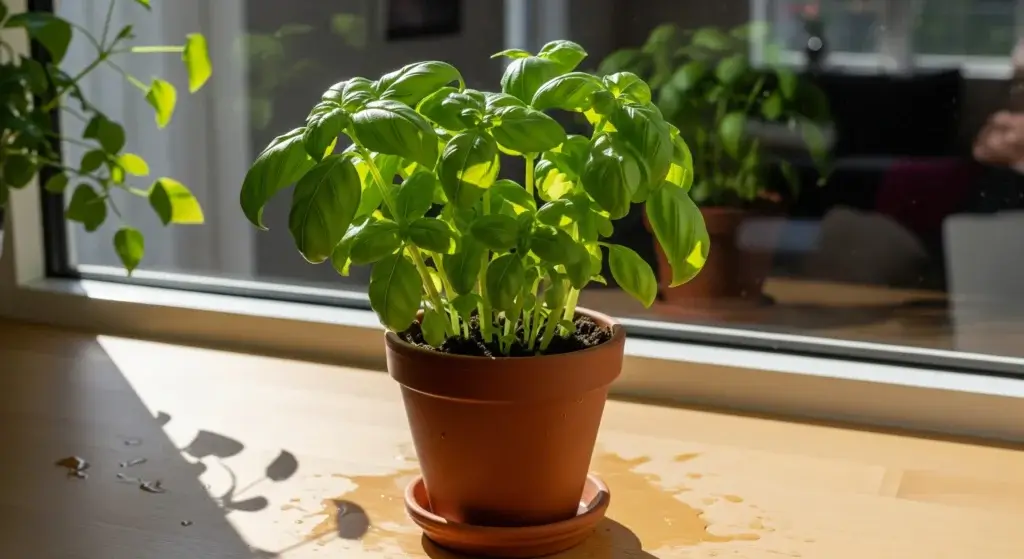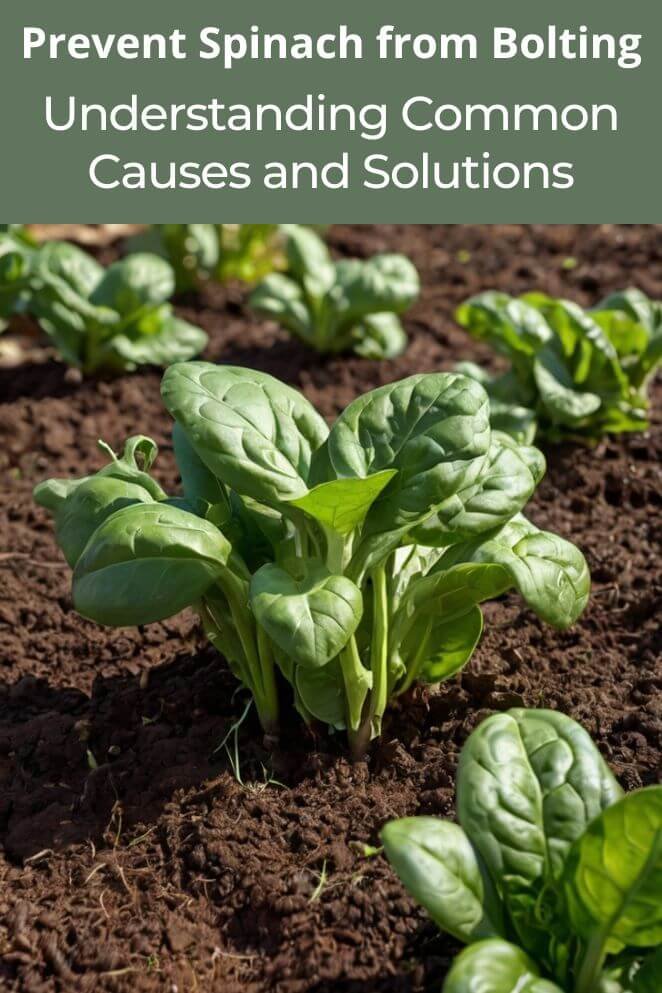
Spinach is one of those greens that gardeners love for its versatility and nutritious value.
It’s perfect for salads, stir-fries, or even smoothies. But there’s one problem that frustrates spinach growers—bolting.
If you’ve ever had your spinach suddenly shoot up tall and start flowering, then you’ve experienced bolting.
It can turn your sweet, tender leaves bitter and ruin your harvest.
So how do you prevent spinach from bolting?
Let’s dive into understanding what bolting is, how to recognize it, and most importantly, how to grow spinach without this issue.
How Do I Know If My Spinach Has Bolted
Bolting is nature’s way of saying that the spinach plant is transitioning from producing leaves to producing seeds.
It’s usually triggered by environmental factors, especially heat or the length of daylight.
Here’s how you can recognize bolting in your spinach:
- Rapid growth: Suddenly, your spinach will grow tall, almost like it’s stretching out. You’ll notice the plant starts to send up a thick central stalk.
- Flowering: At the top of this stalk, you’ll see small clusters of flowers beginning to form. The plant is now focusing on reproduction rather than leaf production.
- Bitter leaves: Once spinach bolts, the leaves tend to turn bitter. The tender, sweet flavor that you once enjoyed will be gone. This is because the plant is channeling energy into flower and seed production, not leaf quality.
These signs are clear indicators that your spinach is bolting and ready to move on from its vegetative phase.
Now that we know how to spot it, let’s talk about ways to avoid it in the first place.
- Read also: Tips for Gardeners: A Guide to Common Spinach Pests and Diseases
- Read also: Bug-Free Spinach: How to Get Rid of Bugs on Spinach
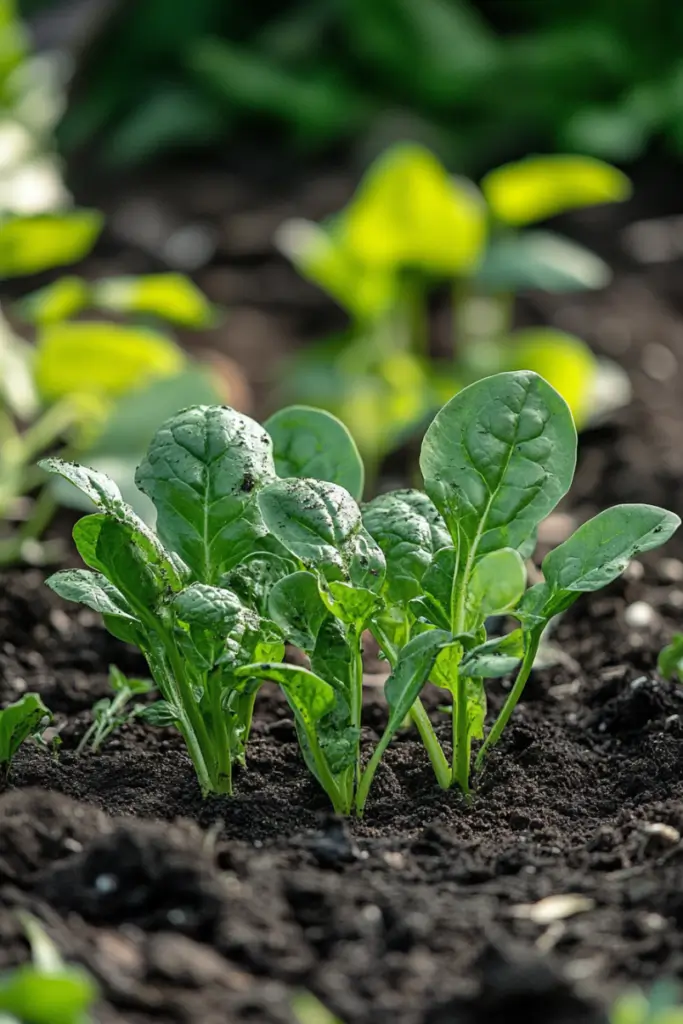
How to Grow Spinach Without Bolting
Growing spinach without bolting requires some strategic planning and attention to detail, but it’s not overly complicated.
Here are some tried-and-true strategies that will help keep your spinach producing lush, tasty leaves without prematurely going to seed.
Let’s follow these tips:
Choose the right spinach variety
Not all spinach varieties handle warm weather the same way.
Some are naturally more resistant to bolting than others, which makes them ideal for those looking to prevent this issue.
Spinach types like ‘Bloomsdale,’ ‘Tyee,’ and ‘Space’ are known for their resistance to bolting.
These varieties have been developed to withstand temperature fluctuations better, so they are less likely to bolt in mildly warmer climates.
If you live in a region that experiences sudden temperature shifts, it’s worth investing time in researching bolt-resistant types.
Even though no variety is completely bolt-proof, starting with one that has better tolerance gives you a great head start.
Plant at the right time
Spinach is a cool-season crop, which means it thrives when temperatures are cool, ideally between 50°F and 60°F (10°C to 16°C).
Planting spinach at the wrong time can increase its stress and lead to bolting.
One of the best times to plant spinach is early in the spring, as soon as the soil can be worked.
The cooler weather will encourage healthy leaf production without triggering bolting.
If you missed the spring window, you could plant spinach in late summer for a fall harvest.
As temperatures cool down again, your spinach will have favorable growing conditions.
Plus, you’ll have fresh greens well into the autumn months!
Avoid planting spinach in the peak of summer heat is a recipe for bolting.
The long days and high temperatures put stress on the plant, causing it to enter its reproductive phase (bolting) prematurely.
Provide shade
Spinach is sensitive to temperature changes, and high heat can be a major trigger for bolting.
When temperatures rise, it’s important to take steps to keep your spinach cool.
You can extend your spinach’s growing season by providing some shade during hotter parts of the day.
A simple shade cloth or garden netting can lower the temperature around your plants and help prevent them from bolting.
Another option is companion planting, grow taller plants, like beans or tomatoes, near your spinach.
These taller plants can naturally provide shade and reduce the amount of direct sunlight your spinach gets, helping to keep them cool during the hottest parts of the day.
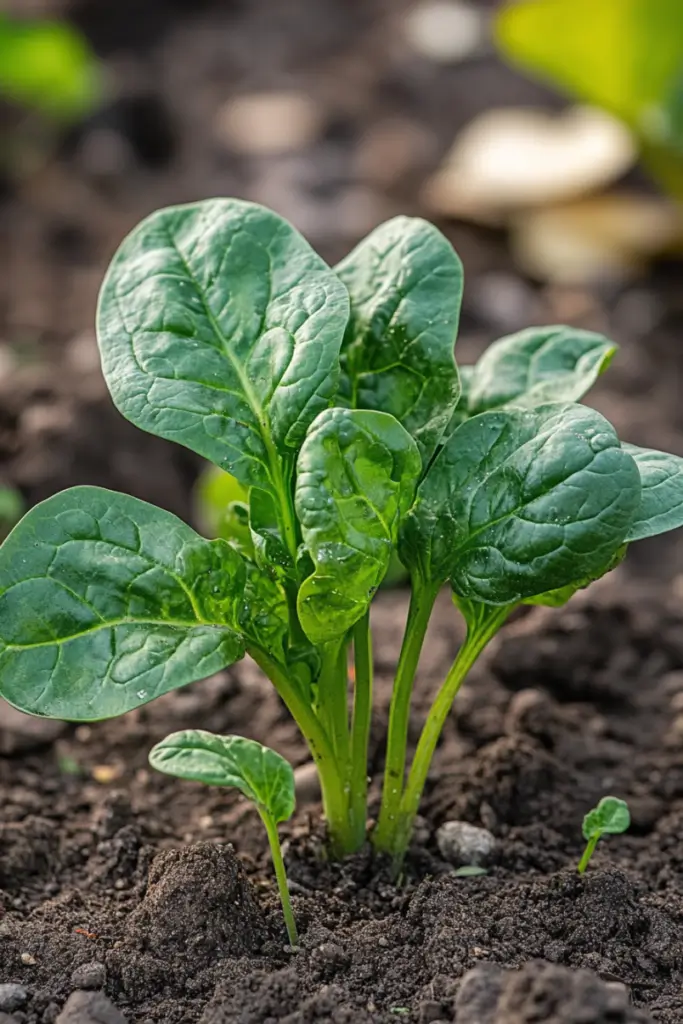
Water consistently
Spinach needs consistent moisture to thrive, and dry soil can stress the plant, which increases the risk of bolting.
Check the moisture levels in your spinach bed regularly.
A good rule is to water deeply when the top inch of soil feels dry.
Deep watering encourages the roots to grow deeper, making the plant more resilient to temperature fluctuations.
While spinach loves water, too much can cause problems like root rot.
Make sure your spinach bed has good drainage to prevent waterlogging.
Consider raised beds or adding organic matter like compost to improve drainage if necessary.
Watering in the morning allows the spinach to absorb moisture before the heat of the day sets in.
It also gives time for the leaves to dry, which can help prevent diseases caused by excess moisture sitting on the plant overnight.
Harvest regularly
Harvesting spinach frequently encourages the plant to focus on leaf production rather than seed production.
This can significantly delay bolting.
Pick leaves when they’re young: Spinach leaves can be harvested as soon as they are big enough to eat.
Picking them regularly not only keeps your plant productive but also prevents it from maturing too quickly, which can lead to bolting.
When harvesting spinach, take leaves from the outer part of the plant.
This method encourages the plant to keep producing new leaves, keeping it in the vegetative (leaf-producing) stage for longer.
Mulching
Mulching is an excellent way to regulate soil temperature and keep the ground cool and moist, both of which are critical in preventing bolting.
Choose organic mulches like straw, shredded leaves, or compost to make excellent mulch for spinach.
They help retain moisture in the soil while also keeping it cooler, which can significantly delay bolting.
Apply mulch after planting, add a 1-2 inch layer of mulch around the base.
This layer will help protect the roots from temperature swings and reduce evaporation, keeping your soil moist for longer periods.
As the season progresses, be sure to add fresh mulch as needed.
Organic mulches will break down over time, so replenishing it will ensure your spinach continues to benefit from its cooling and moisture-retention properties.
Thin crowded plants
Crowded spinach plants can quickly become stressed, which is one of the main triggers for bolting.
When plants are too close together, they end up competing for essential resources like sunlight, water, and nutrients, all of which are vital for healthy growth.
Thinning your spinach plants is crucial to ensure they have room to grow. Ideally, each plant should have about 4-6 inches of space between them.
This spacing allows for better air circulation, reduces stress, and ensures each plant gets enough light and nutrients.
To thin out crowded plants, simply remove some seedlings by gently pulling them out of the ground or snipping them at soil level with scissors.
Be careful not to disturb the roots of the remaining plants.
The best time to thin your spinach is when the seedlings are about 2-3 inches tall.
At this stage, you can clearly see which plants are growing stronger and which ones might need to be removed to reduce overcrowding.
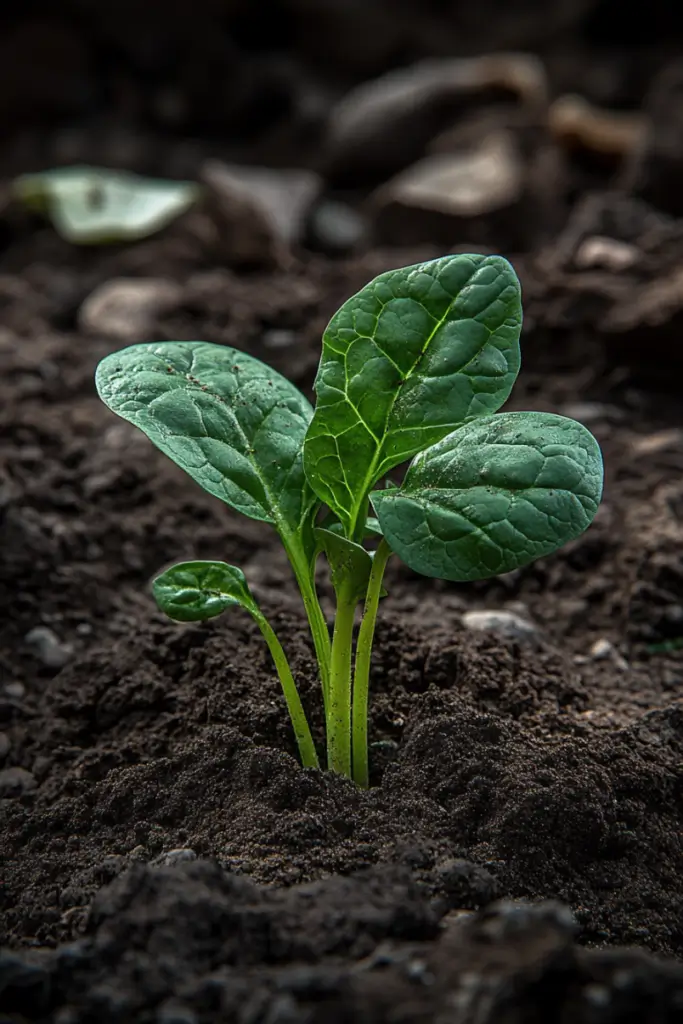
- Read also: Tips for Thriving Plants: Guide to Longevity Spinach Care
- Read also: Malabar Spinach Care: Grow Your Own Edible Vines
Conclusion
Spinach bolting can feel like a setback, but with the right techniques, you can reduce its chances and still enjoy a bountiful harvest.
Pay close attention to the growing environment, pick the right variety, and take care of your plants through regular watering, mulching, and harvesting.
By choosing bolt-resistant varieties, planting in cooler seasons, and providing shade, you’ll have a good handle on keeping your spinach growing strong without the risk of early bolting.
Keep an eye on your plants, and don’t forget that a little preventive effort goes a long way!
FAQs
Yes, you can eat spinach after it bolts, but the leaves may taste bitter and tougher than before. The young flower buds can also be edible and have a slightly bitter taste. It’s best to harvest before bolting to enjoy the tender, sweet leaves.
While it’s hard to completely prevent bolting, you can delay it by growing bolt-resistant varieties, providing shade, and keeping the soil cool and moist.



